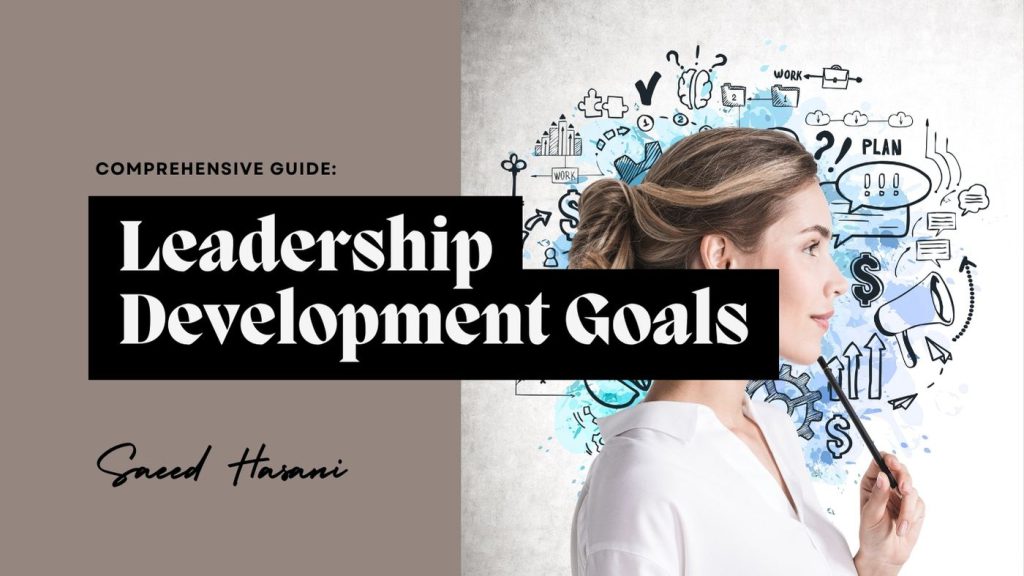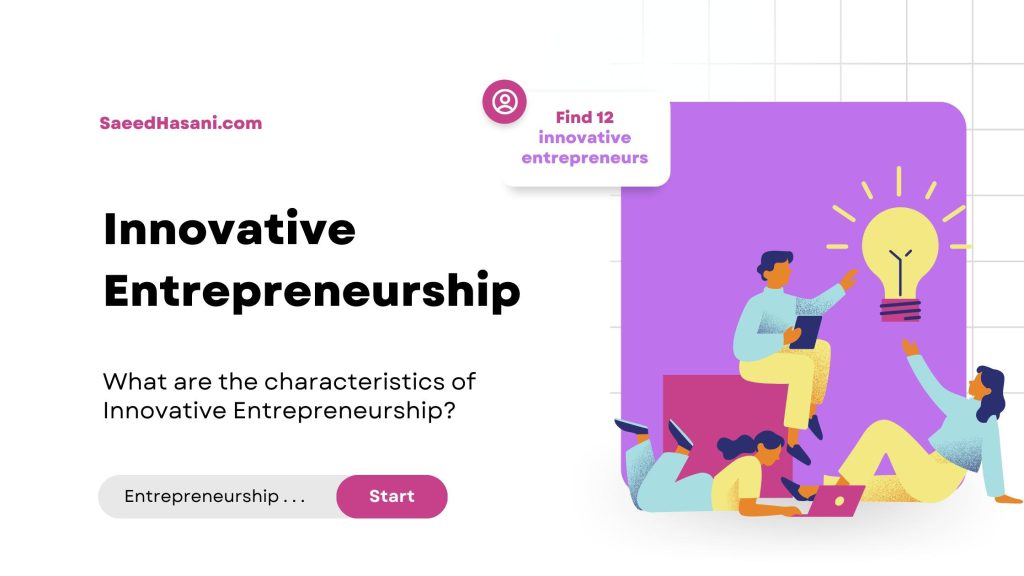17 Leadership Development Goals: Comprehensive Guide!

Are you looking to transform your leadership skills and achieve remarkable success in your organization? Discover the power of setting effective “Leadership Development Goals” to unlock your full potential as a leader.
Join us as we explore the essential steps to craft goals that not only propel your career forward but also drive organizational growth and innovation.
Content Overview:
What is leadership development?
Leadership development refers to any activity that enhances the quality, skills, and effectiveness of leaders. It’s a systematic approach aimed at expanding the leadership abilities within an individual or organization.
This can involve a wide range of activities, including formal training programs, mentoring, coaching, self-directed learning, and practical leadership experience.
The core goal of leadership development is to cultivate a pipeline of capable leaders who can ensure the ongoing success and adaptation of their organizations in a constantly changing environment.
Key components of leadership development might include:
- Self-awareness: Understanding one’s strengths, weaknesses, values, and how one’s leadership style impacts others.
- Skill building: Developing specific leadership competencies such as strategic thinking, communication, problem-solving, and team building.
- Knowledge expansion: Gaining insights into the business, understanding the industry trends, and learning about best practices in leadership.
- Networking: Building relationships with mentors, peers, and subordinates to facilitate learning and opportunities for collaboration.
- Experience: Learning through leading projects, facing challenges, and navigating complex organizational dynamics.
Effective leadership development is tailored to the needs of the individual and the organization, recognizing that different stages of a leader’s career and different organizational contexts require different approaches.
It’s also seen as a continuous process, reflecting the idea that leadership skills need to be constantly refined and updated as new challenges arise.
Why is leadership development important?
Leadership development is crucial for several reasons, each contributing to the individual’s growth, the organization’s success, and the broader societal impact. Here are some of the key reasons why leadership development is considered important:
- Adapting to Change: In an ever-changing business environment, organizations need leaders who can navigate through uncertainty, drive change, and ensure sustainability. Leadership development prepares leaders to adapt to such changes and guide their teams effectively.
- Succession Planning: It ensures there is a pipeline of skilled leaders ready to fill key positions as they become available. This is vital for the continuity and long-term success of an organization, reducing the risk associated with leadership transitions.
- Enhancing Performance: Good leadership directly correlates with high team performance and organizational productivity. Developing leadership skills can lead to better decision-making, improved conflict resolution, and more effective communication, all of which contribute to the organization’s bottom line.
- Employee Engagement and Retention: Leaders play a significant role in shaping organizational culture and employee experiences. Effective leadership development can equip leaders with the skills needed to engage and retain top talent, reducing turnover costs and fostering a positive work environment.
- Innovation and Growth: Leaders who are continuously developed can foster a culture of innovation within their teams. They are better positioned to encourage creative thinking, explore new opportunities, and drive the organization toward growth and development.
- Personal Growth: Leadership development isn’t just about improving job performance; it’s also about personal growth. It helps individuals understand their strengths and weaknesses, develop resilience, and build a network of supportive relationships.
- Impact on Society: Leaders influence not just their organizations but also the communities and societies in which they operate. By developing ethical, responsible leaders, leadership development programs can have a broader positive impact on societal challenges and contribute to the greater good.
In essence, leadership development is a key investment in the future. It prepares both individuals and organizations to meet current and future challenges head-on, ensuring that they remain competitive, agile, and resilient in a complex global landscape.
What is an example of a leadership goal?
An example of a leadership goal is “Improve Team Engagement and Productivity.” This goal focuses on enhancing the motivation, satisfaction, and overall performance of the team through various leadership strategies. To achieve this, the leader might set specific, measurable objectives and actions, such as:
- Conduct Regular One-on-One Meetings: Schedule monthly one-on-one meetings with each team member to discuss their career aspirations, feedback on their work, and any challenges they are facing. This can help in understanding each member’s unique motivations and concerns, leading to personalized support.
- Implement a Feedback System: Develop and introduce a structured feedback system that allows for both upward and downward feedback within the team. This could involve anonymous surveys, feedback sessions, and open forums, aiming to create a culture of openness and continuous improvement.
- Enhance Team Communication: Facilitate better communication within the team by using collaborative tools, holding regular team meetings, and encouraging open discussions. This ensures that everyone is aligned with the team’s objectives and can contribute their ideas.
- Provide Professional Development Opportunities: Identify and offer access to training, workshops, and mentoring opportunities that match the team members’ career goals and the organization’s needs. This shows investment in the team’s growth and can lead to increased engagement and productivity.
- Recognize and Reward Achievements: Establish a recognition program to celebrate individual and team successes. This could range from simple public acknowledgments in team meetings to more formal rewards. Recognition motivates employees and reinforces the behaviors and outcomes valued by the leader and the organization.
- Track and Measure Engagement Levels: Use employee engagement surveys and productivity metrics to regularly assess progress towards the goal. This data can inform adjustments to strategies and initiatives to ensure continuous improvement.
Setting a goal like “Improve Team Engagement and Productivity” not only enhances the team’s performance but also contributes to the leader’s growth by developing skills in communication, empathy, strategic planning, and team management.
17 Leadership Development Goals
Certainly, setting leadership development goals is crucial for personal growth and organizational success. Here are 17 leadership development goals with explanations:
- Enhance Emotional Intelligence: Focus on understanding and managing your emotions and the emotions of others. This can improve communication, conflict resolution, and relationships within the team.
- Develop Strategic Thinking Skills: Aim to see the bigger picture and the long-term implications of actions. Strategic thinking helps in making more informed decisions and planning for future challenges and opportunities.
- Improve Communication Skills: Work on clear and effective communication, including listening, verbal, and written skills. Effective communication ensures that your message is conveyed clearly and can lead to better teamwork and understanding.
- Strengthen Decision-Making Abilities: Enhance your ability to make informed, timely, and effective decisions by analyzing data, considering alternatives, and weighing risks. Good decision-making can drive positive outcomes for your team and organization.
- Cultivate Resilience: Build the capacity to recover quickly from difficulties. Resilience helps leaders navigate challenges, adapt to change, and emerge stronger from setbacks.
- Expand Your Professional Network: Aim to build and maintain a broader professional network. Networking can provide new opportunities, insights, and support from peers across different industries.
- Enhance Team Motivation: Learn how to inspire and motivate your team to achieve their best. Understanding what drives each team member can lead to higher engagement and productivity.
- Master Time Management: Improve your ability to prioritize tasks, manage your time effectively, and delegate appropriately. Good time management can lead to increased efficiency and the ability to focus on strategic goals.
- Cultivate a Positive Organizational Culture: Work on creating and maintaining a positive, inclusive, and productive workplace culture. A positive culture can improve employee satisfaction, retention, and performance.
- Build Conflict Resolution Skills: Develop strategies for managing and resolving conflicts constructively. Effective conflict resolution can lead to healthier work relationships and a more cohesive team.
- Advance Technical or Industry Knowledge: Commit to continuous learning to stay up-to-date with the latest trends, technologies, and practices in your industry. This ensures you can make informed decisions and lead with confidence.
- Foster Innovation and Creativity: Encourage an environment where new ideas are welcomed and explored. Innovation and creativity can drive growth, efficiency, and competitive advantage.
- Enhance Leadership Presence: Work on developing a strong, confident presence that inspires trust and respect. Leadership presence can enhance your ability to influence, lead, and engage others.
- Practice Ethical Leadership: Commit to high ethical standards and integrity in all decisions and actions. Ethical leadership fosters trust, credibility, and a strong reputation.
- Develop Coaching and Mentoring Skills: Learn how to effectively coach and mentor others for their development. This can help build a stronger, more capable team.
- Improve Performance Management: Enhance your ability to set clear goals, provide constructive feedback, and evaluate team performance. Effective performance management helps align individual contributions with organizational objectives.
- Cultivate Adaptability: Work on being more adaptable to change and flexible in your approaches. Adaptability is key in a fast-paced, ever-changing business environment, allowing leaders to respond effectively to new challenges and opportunities.
Each of these goals focuses on a different aspect of leadership, aiming to create well-rounded, effective leaders capable of driving positive change and achieving success in their organizations.
How to write leadership development goals?
Writing effective leadership development goals involves a structured approach that ensures these goals are clear, actionable, and aligned with both personal aspirations and organizational objectives. Here’s a guide to crafting leadership development goals:
1. Reflect on Your Leadership Journey
- Assess Your Strengths and Weaknesses: Begin by conducting a self-assessment to identify your leadership strengths and areas for improvement. Tools like SWOT analysis (Strengths, Weaknesses, Opportunities, Threats) can be helpful.
- Gather Feedback: Seek feedback from peers, supervisors, and team members to gain diverse perspectives on your leadership style and areas where you can improve.
2. Understand Organizational Objectives
- Align with Business Goals: Ensure your leadership development goals support the broader objectives of your organization. Understanding how your leadership style and skills can contribute to the company’s success is crucial.
- Consider Team Needs: Reflect on your team’s current challenges and aspirations. Your leadership development should address these needs, fostering a more cohesive and productive team environment.
3. Use the SMART Criteria
- Specific: Clearly define what you want to achieve, avoiding vagueness.
- Measurable: Include criteria for measuring progress and success.
- Achievable: Ensure the goal is realistic with the resources and time available.
- Relevant: Align the goal with your leadership role, personal career aspirations, and organizational needs.
- Time-bound: Set a deadline to achieve the goal, creating a sense of urgency.
4. Break Down Goals into Actionable Steps
- Create a Plan: Outline specific actions or steps you will take to achieve each goal. This might include attending workshops, seeking a mentor, or leading a new project.
- Resource Identification: Determine what resources or support you’ll need, such as training programs, books, or guidance from a mentor.
5. Monitor and Adjust Your Goals
- Regularly Review Progress: Set aside time to review your progress towards your goals. This could be on a monthly or quarterly basis.
- Be Flexible: Be prepared to adjust your goals as needed based on feedback, new challenges, or changes in organizational objectives.
Example of a SMART Leadership Development Goal
Goal: Improve team communication to enhance project execution efficiency.
- Specific: Implement a weekly check-in meeting and a monthly team-building activity to improve communication and teamwork.
- Measurable: Aim to reduce project delays by 20% and increase team satisfaction scores by 15% within six months.
- Achievable: Allocate resources for team-building activities and adjust schedules to accommodate weekly meetings.
- Relevant: Effective communication is essential for timely project delivery, aligning with organizational goals for efficiency and team morale.
- Time-bound: Evaluate progress after six months, with intermediate reviews every two months.
Writing leadership development goals is a personal and strategic process. Tailoring your goals to reflect your unique leadership path and the specific needs of your team and organization will make your development efforts more focused and effective.
Conclusion
In conclusion, leadership development is a multifaceted and ongoing process critical for personal growth, team success, and organizational resilience in the face of change.
By setting clear, strategic leadership development goals, individuals can enhance their skills, adapt to evolving challenges, and positively impact their organizations and society at large.
Ultimately, investing in leadership development is investing in the future, ensuring a pipeline of skilled leaders ready to navigate the complexities of tomorrow’s business landscape.







Responses